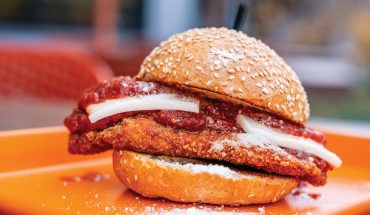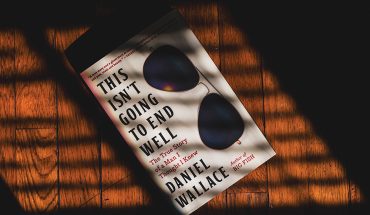Food writer and cookbook author Debbie Moose elevates leftovers and pantry staples with a few simple tricks.
by Addie Ladner
North Carolina native, veteran journalist and seven-time cookbook author (most recently, Carolina Catch: Cooking North Carolina Fish and Shellfish from Mountains to Coast), Debbie Moose is using the shelter-in-place order as a time to get creative with pantry items and random bits lingering in her fridge. This current cooking ethos isn’t a bad philosophy, even when life is back to normal. So how does one get creative with utilizing what’s in one’s kitchen before venturing out? Let her help.
Take it away and thank you, Debbie!
Put Together a Bowl
Start with cooked grains – farro, quinoa, rice. I like farro because its hearty crunch stands up to whatever you add. For extra flavor, add apple or orange juice, or stock, to the grains’ cooking water. While the grains cook, chop bits of vegetables, saute in plenty of olive oil, and add to the warm cooked grains. My latest combo was chopped carrots, asparagus, spinach and cubed ginger-sesame baked tofu (from the supermarket refrigerator case). Drained beans would work, or drop an over-easy fried egg on top. Top it with fresh chopped parsley and/or chives to brighten the flavor. A squeeze of lemon juice and splash of olive oil will finish the entire thing off.
Rethink Black Beans
They aren’t just for soup and burritos! A black bean salad I made for dinner one summer was such a hit that I included the recipe in my book Southern Holidays: A Savor the South Cookbook. It’s hearty enough for lunch or makes a great dinner side dish. Rinse canned beans to remove some of the sodium and starchy residue, then drain well. Combine them with corn kernels (fresh, canned or frozen and thawed), chopped cherry tomatoes, chopped red onions or spring onions, and chopped bell pepper—or any of those things you happen to have. Sauteing the corn in a little olive oil first enhances the flavor. I like chopped fresh cilantro in it, but fresh parsley or chives work too. A vinaigrette with Mexican flavors of chili powder and cumin, along with garlic powder, olive oil and red wine vinegar dresses this salad perfectly.
Make Your Own Salad Dressings
Speaking of salads, improve yours immediately and save money by making your own dressing. It’s tastier and better for you. For a simple vinaigrette, combine three parts oil (olive, canola, grapeseed, avocado) and one part acid (red or white wine vinegar, apple cider vinegar, lime juice, lemon juice) in a jar and shake or whisk in a bowl. Add salt and pepper to your taste. Things like mustard, fresh or dried herbs, crumbled feta or blue cheese, shredded Parmesan, honey, chopped nuts, crushed garlic or shredded fresh ginger can take the base in loads of different directions depending our your dressing preferences.
Fry up your Rice
Asian-style stir-fry or fried rice is a classic vehicle for using up kitchen scraps. Tip: white or brown rice is fine but be sure to cook the rice and let it cool completely if you want to make a bowl of good fried rice, as warm rice will stick together when you fry it. Top your now homemade takeout with items like leftover grilled chicken, asparagus, carrots and then peanuts, cashews or sesame seeds for an extra crunch. To bring some heat, splash on sriracha.
Shred Veggies into Slaw
No cabbage? You can still make slaw! Shred root vegetables such as carrots, parsnips, Japanese turnips and radishes, alone or in combinations, to create slaws with bright colors and different flavors. Brussels sprouts are in the cabbage family, too. Using the food processor, I love shredding Brussels sprouts, carrots and radishes for a slaw to go with chicken tacos. I’m not a big fan of mayonnaise-based slaws, so I tossed mine in a vinaigrette of olive oil and apple cider vinegar, plus a little sugar. But go with mayo if you like.
Mix Leftovers into Hash
My leftover Passover brisket became brisket hash. I chopped Yukon Gold potatoes, onions and carrots, sautéed them with chipotle sauce from the brisket (we roll a little differently in our house) and the remaining brisket, chopped.
Make a Frittata
Since discovering the frittata, I’ve never gone back to the tedium of flipping omelets. I love the frittata so much, there’s a recipe for a shrimp one in my book Carolina Catch: Cooking North Carolina Fish and Shellfish from Mountains to Coast. Coat the bottom of an oven-safe pan with plenty of olive oil, then saute some vegetables – onions, spinach and cherry tomatoes are a good combination. When those begin to soften, add cooked shrimp, cooked ham, cooked bacon, or leave it all-veg. Then, pour beaten eggs on top and let it cook undisturbed for a few minutes until the edges of the eggs begin to set. Put the frittata in its pan under the oven broiler until the top is lightly browned. Watch carefully; it will take only a few minutes. Frittatas are good warm or at room temperature, for breakfast or as a light lunch.
…
Debbie Moose’s work has appeared in publications such as Our State and she’s a former The News & Observer food editor. Interesting fact: She belongs to the Really Terrible Orchestra of the Triangle and, apparently, if you drive by her house at the wrong time, you may be forced to hear her practice. Connect with Debbie via Instagram or Twitter, or at her website for more kitchen wisdom.






